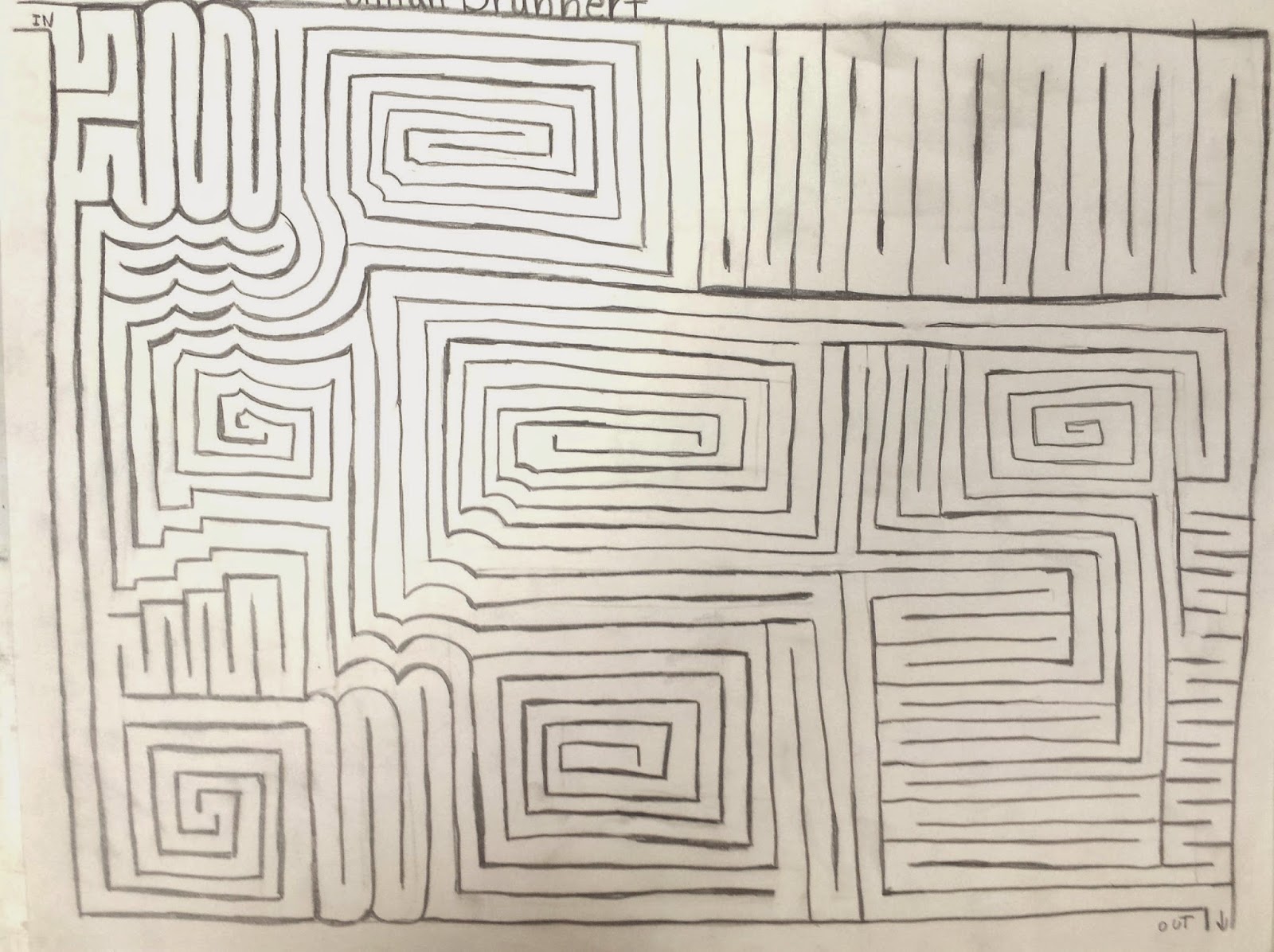One of the first things we attempted was to build a classroom sized labyrinth using wide masking tape on the ground. I measured the available space and gave students a blank grid with our dimensions with the description of a labyrinth. I also used the smart-board and camera to demonstrate how to draw paths and how to use up all the space. Basically, a labyrinth has one path, no dead ends. easy path. A maze has many choices and dead ends. Once we had a successful student design, we got out tape, projected the design, and by counting spaces, students were able to lay out several parts of the Labyrinth in a few class periods. Once we built it, we walked it! some students tried to run the maze as fast as possible, and the quickest was 40 seconds.
I then gave them a packet of 6 mazes from Andrew Bernhardt's maze webpage as our anticipatory set. Some were verrrrry challenging! Through studying why they were challenging and reading some directions on maze building from the website "AMAZEING ART" , students are familiarized with some key components of maze building. Here are some things we cover:
Some of the vocabulary includes the terms: Vortexes, junctions, bottlenecks, kernels, one-ways, bridges, consistent pathwidth, zig-zags, dead-ends, and circle-back loops.
Students practice maze creating on office paper, and after a few successes on the small scale, they move to a big paper. the big paper is 11x 14.25 inches. This unusual ratio helps me to photocopy their designs!
After all students create their mazes, I take the stack to the photocopy machine, shrink to 11x 8.5 and reproduce the work. They are collated into packets so that every student gets a copy of all the mazes generated by their classmates. The last activity is to let them solve each others mazes!
Here is the rubric for judging successful maze design :
Consistent Path Width 20 points
Many Junctions 20 points
Difficult Solution 20 points
No wasted space 20 points
Craftsmanship/ clarity 20 points
Total 100 points
 |
| Taped labyrinth is designed/ laid out on the grid of the floor. |









No comments:
Post a Comment
Note: Only a member of this blog may post a comment.